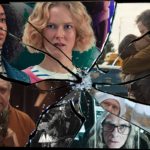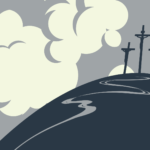Content warning: This piece contains images of Indigenous people who have passed away.
Giving a Voice to Aboriginal and Torres Strait Islander peoples is in the news. Recently we learnt that a referendum about this matter will be held (the talk is that mid-October is the preferred time). The Uniting Church Assembly has already indicated its strong support for a YES vote in this referendum, and our Presbytery decided this earlier this year at the March meeting at Melba.
But did you know that, within the Uniting Church, we have been giving a Voice to Aboriginal and Torres Strait Islander peoples for almost four decades? That Aboriginal and Torres Strait Islander peoples are guaranteed places as members of Synods and Assemblies whenever they meet? That an Aboriginal or Islander person will often sit beside the Moderator of a Synod or President of the Assembly, and serve as co-chair of that meeting? That Aboriginal and Islander voices have a permanent pathway to speak to the whole church, through the Uniting Aboriginal and Islander Christian Conference (Congress)?
Statement to the nation
In 1988—the year that Australia celebrated the Bicentenary of white settlement—the Assembly published a Statement to the Nation, which focussed on Aboriginal people, who had lived on and cared for the country we know as Australia for many thousands of years. You can read the full text of that 1988 Statement here.
That Statement noted that “the movements of history have brought together here in one nation … people of many cultures and races, both Aboriginal and migrant”, and affirmed that within the Uniting Church, “Aboriginal and newer Australians have determined to stand together”. The Church was committing to a co-operative partnership with First Peoples—in 1988.

Before that Statement, in 1985, the Uniting Church had formed the Uniting Aboriginal and Islander Christian Conference (UAICC). The logo of the UAICC is depicted here. The Congress (as it is usually known) gave Aboriginal and Islander people a voice within the structures of the church—they are consulted about decisions and have a guaranteed number of members in the Synods and Assembly meetings of the church. The vision of the UAICC, in their own words, is:
- We determine our own goals and objectives and decide policies and priorities;
- We run our own programs and institutions;
- We aim, in collaboration with other people, to bring to an end the injustices which hold Aboriginal and Islander people at the fringes of Australian society and to help Aboriginal and Islander people achieve spiritual, economic, social and cultural independence.

A decade later, in 1994, the President of the Uniting Church, Dr Jill Tabart, signed a Covenant Agreement with the Chairperson of the UAICC, Pastor Bill Hollingworth (pictured above). The Covenant expressed “our desire to work in solidarity … for the advancement of God’s kingdom of justice and righteousness in this land”. Since then, the church has really worked hard at putting this into practice.
Then, in 2014, people from all over Australia travelled to Canberra to hold a prayer vigil for Our Destiny Together in front of Parliament House. Rev. Rronang Garrawurra, Chairperson of the Uniting Aboriginal and Islander Christian Congress (UAICC) and Assembly President, Rev. Prof. Andrew Dutney, led a service of worship. From remote communities in places like Arnhem Land and the Anangu Pitjantjatjara Yankunytjatjara (APY) Lands and from the centres of our big cities, people gathered to pray, pass the peace, and share in Holy Communion.

From left: the Rev. Elenie Poulus (Social Justice Director),the Rev. Rronang Garrawurra, Chairperson of the Uniting Aboriginal and Islander Christian Congress (UAICC), the Rev. Prof. Andrew Dutney, President of the Assembly, and the Rev. Terence Corkin, General Secretary of the Assembly, at Parliament House in 2014 for the A Destiny Together pilgrimage.
Disciple and teacher
“It is enough for the disciple to be like the teacher”, Jesus says as he instructs his disciples about their mission (Matt 10:25). These developments within the Uniting Church show how we are striving to be like Jesus, sharing together with all people—especially the First Peoples of this continent (Aboriginal and Torres Strait Islander people).
And we know that it is possible—and, indeed, that it brings good value—for First Peoples to have a place in the councils of the church, discussing and deciding policy, and for their Voice, through the Congress, to be heard and responded to in appropriate ways.
That’s another good reason why we need to Vote YES in the referendum, surely. We need to ensure that, as well as recognising First Peoples in the Australian Constitution, we have a permanent Voice to Parliament in our ongoing structures.
John Squires is the Editor of With Love to the World. This piece originally appeared on his blog, An Informed Faith. View the original post here.











